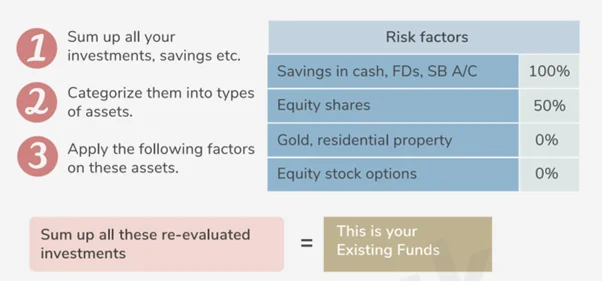

none
Module 03 Term Insurance
Ch. 7: How Much Term Insurance Cover Do I Need?
Share
Index
What Is Term Insurance
When To Buy Term Plan
Why Should You Buy Term Plan
Who Should Buy Term Insurance
Where to Buy Term Insurance From
How to Buy Term Plan
How Much Cover Do I Need
Saral Jeevan Bima
Term Insurance Riders
Exclusions in Term Insurance
Term Insurance Claims Process
Customization in Term Plans
Benefits of Buying Term Insurance
Decreasing Term Insurance
Group Term Insurance
Married Women’s Property Act
Claim payout options
Eligibility Requirements
How Does It Work
Increasing Cover
Life Stage Benefit
Things To Keep In Mind IG
Types of Term Insurance Plans
Whole Life Term Insurance
Term Insurance Tax Benefits*


-
 Key takeaways from this chapter
Key takeaways from this chapter
Buying inadequate insurance may be equal to buying no cover at all.
How Do You Calculate This Gap
The amount you own
But what about inflation?


Get Guaranteed Returns After a Month^
Unlock the Power of Smart Investment!
Looking to buy Term Plan
ABSLI Salaried Term Plan
Exclusively For Salaried Individuals
Optional Accelerated Critical Illness benefit
Inbuilt Terminal Illness Benefit
Life Cover upto 70 years
4 Plan Options
Life Cover
₹1 crore
Premium:
₹492/month¹
-
Disclaimer
ABSLI Salaried Term Plan (UIN:109N141V01) is a non-linked non-participating individual pure risk premium life insurance plan; upon Policyholder’s selection of Plan Option 2 (Life Cover with ROP) this product shall be a non-linked non-participating individual savings life insurance plan.
¹ LI Age 21, Male, Non Smoker, Option 1: Life Cover, PPT: Regular Pay, SA: ₹ 1 Cr., PT: 10 years, Premium paying term: 10 years, Annual Premium: ₹ 5900/- ( which is ₹ 491.66/month) Premium exclusive of GST. On death, 1 Cr SA is paid and the policy terminates.
ADV/4/22-23/74










